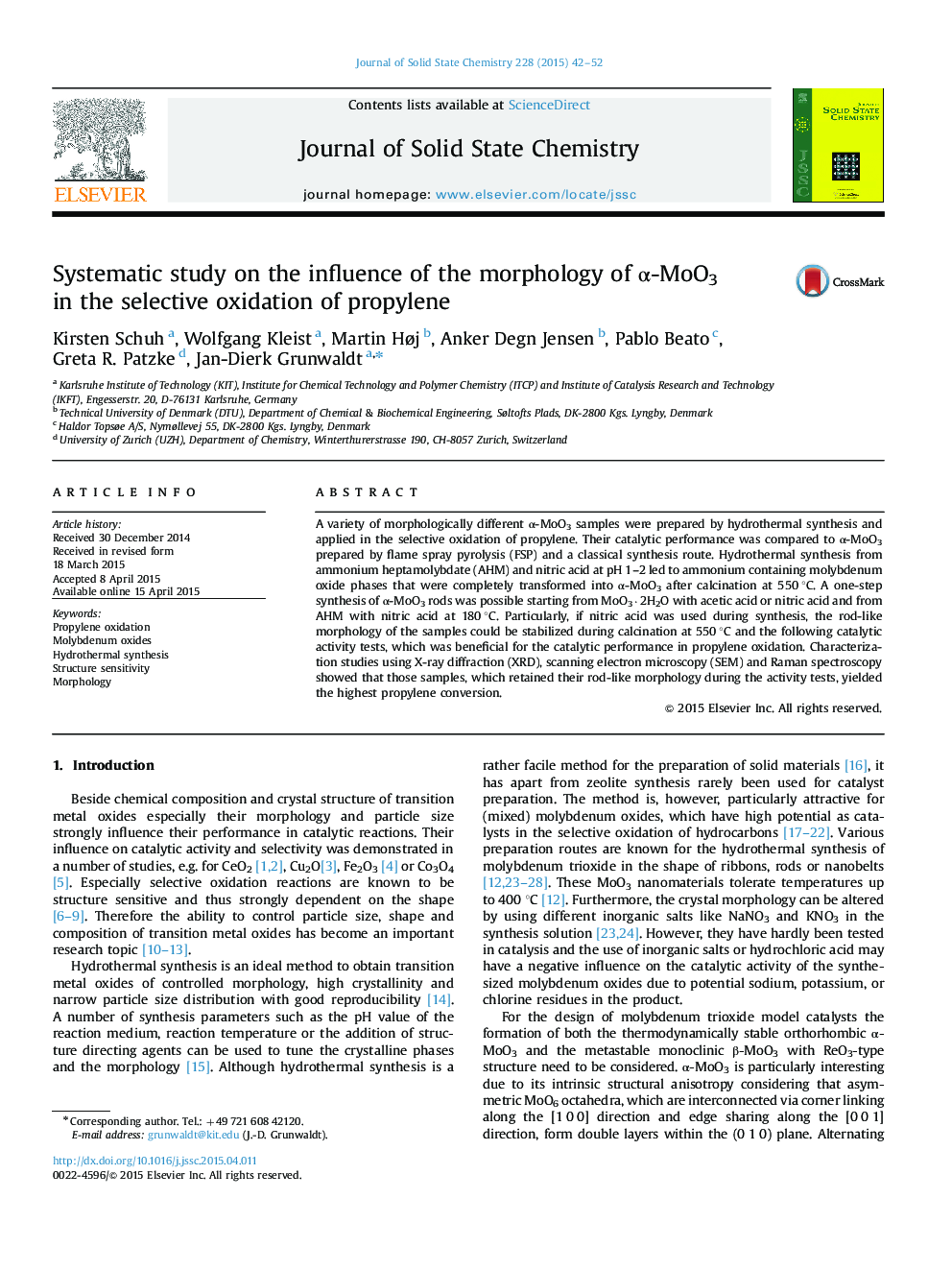| کد مقاله | کد نشریه | سال انتشار | مقاله انگلیسی | نسخه تمام متن |
|---|---|---|---|---|
| 1331486 | 1500088 | 2015 | 11 صفحه PDF | دانلود رایگان |

• Hydrothermal synthesis of MoO3 resulted in either rod or slab shaped particles depending on pH.
• At pH<0 rods stable towards calcination and catalytic activity testing were formed.
• Rod shaped particles had significantly higher activity than slab shaped ones.
• The rod shaped particles mainly expose the (1 0 0) facets which are the most active surfaces.
• Total surface area is not main determining factor for catalytic activity.
A variety of morphologically different α-MoO3 samples were prepared by hydrothermal synthesis and applied in the selective oxidation of propylene. Their catalytic performance was compared to α-MoO3 prepared by flame spray pyrolysis (FSP) and a classical synthesis route. Hydrothermal synthesis from ammonium heptamolybdate (AHM) and nitric acid at pH 1–2 led to ammonium containing molybdenum oxide phases that were completely transformed into α-MoO3 after calcination at 550 °C. A one-step synthesis of α-MoO3 rods was possible starting from MoO3·2H2O with acetic acid or nitric acid and from AHM with nitric acid at 180 °C. Particularly, if nitric acid was used during synthesis, the rod-like morphology of the samples could be stabilized during calcination at 550 °C and the following catalytic activity tests, which was beneficial for the catalytic performance in propylene oxidation. Characterization studies using X-ray diffraction (XRD), scanning electron microscopy (SEM) and Raman spectroscopy showed that those samples, which retained their rod-like morphology during the activity tests, yielded the highest propylene conversion.
Hydrothermal synthesis from MoO3·2H2O in the presence of HNO3 led to rod-shaped particles which mainly expose (1 0 0) facets which are the most active surfaces.Figure optionsDownload as PowerPoint slide
Journal: Journal of Solid State Chemistry - Volume 228, August 2015, Pages 42–52